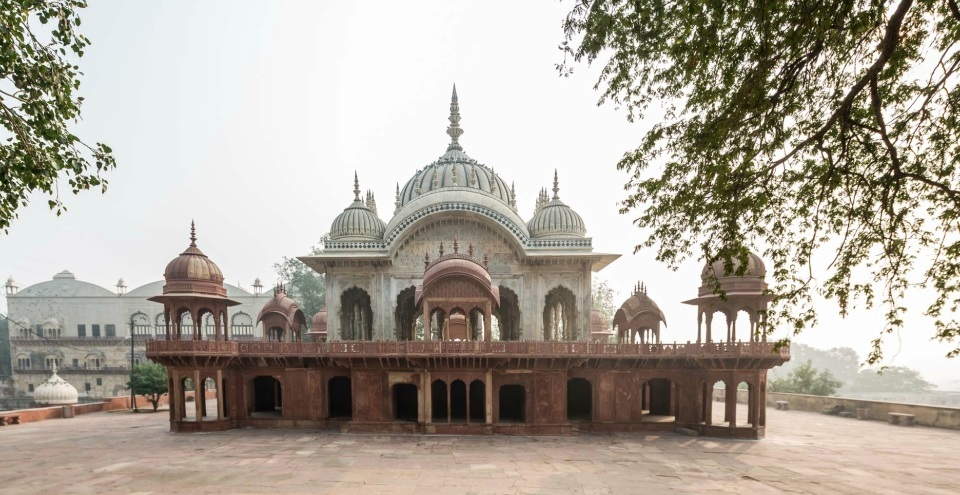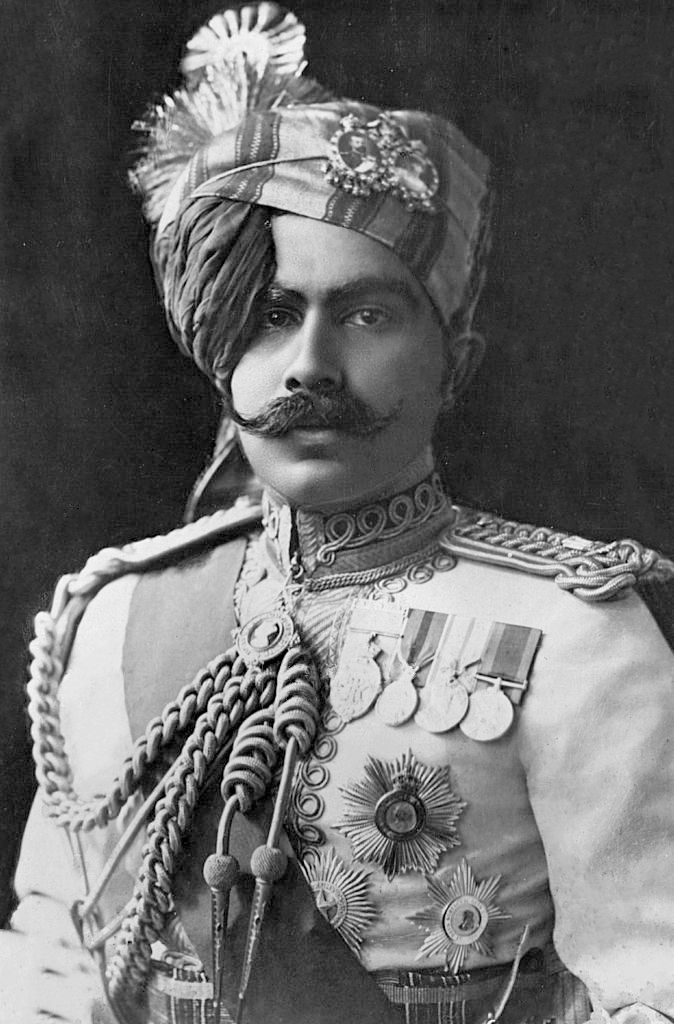|
Rajputana Agency
The Rajputana Agency was a political office of the British Indian Empire dealing with a collection of native states in Rajputana (now in Rajasthan, northwestern India), under the political charge of an Agent reporting directly to the Governor-General of India and residing at Mount Abu in the Aravalli Range. The total area of the states falling within the Rajputana Agency was , with eighteen states and two estates or chiefships. Subdivisions and (e)states * Mewar Residency, with headquarters at Udaipur, dealt with the state of Mewar (title Maharana of Udaipur), a salute state entitled to a hereditary gun salute of 19 guns (21 local). * Southern Rajputana States Agency, which was part of Mewar Residency until 1906, when it was separated, covered three salute states: ** Banswara, title Maharawal, hereditary 15 guns ** Dungarpur, title Maharawal, hereditary 15 guns ** Pratapgarh, title Maharawat, hereditary 15 guns * Jaipur Residency, with headquarters at Jaipur, dealt with ... [...More Info...] [...Related Items...] OR: [Wikipedia] [Google] [Baidu] |
British India
The provinces of India, earlier presidencies of British India and still earlier, presidency towns, were the administrative divisions of British governance on the Indian subcontinent. Collectively, they have been called British India. In one form or another, they existed between 1612 and 1947, conventionally divided into three historical periods: *Between 1612 and 1757 the East India Company set up Factory (trading post), factories (trading posts) in several locations, mostly in coastal India, with the consent of the Mughal emperors, Maratha Empire or local rulers. Its rivals were the merchant trading companies of Portugal, Denmark, the Netherlands, and France. By the mid-18th century, three ''presidency towns'': Madras, Bombay and Calcutta, had grown in size. *During the period of Company rule in India (1757–1858), the company gradually acquired sovereignty over large parts of India, now called "presidencies". However, it also increasingly came under British government over ... [...More Info...] [...Related Items...] OR: [Wikipedia] [Google] [Baidu] |
Jaipur State
Jaipur State was a princely state in India during East India Company rule and thereafter under the British Raj. It signed a treaty creating a subsidiary alliance with the Company in 1818, after the Third Anglo-Maratha War. It acceded to independent India in 1947 and was integrated into India by 1949. Upon integration, the ruler was granted a pension ( privy purse), certain privileges, and the use of the title ''Maharaja of Jaipur'' by the Government of India. However, the pension, privileges, and the use of the title were ended in 1971 by the 26th Amendment to the Constitution of India. History Jaipur's predecessor state was the Kingdom of Dhundhar founded in 1093 by Dullah Rai, also known as Dulha Rao. The state was known as Amber between the fourteenth century and 1727. In that year, a new capital was built and named Jayapura, when the kingdom was renamed as Jaipur. Mythical accounts The Kachwaha Rajputs claim descent from Kusha, son of the legendary Rama. ... [...More Info...] [...Related Items...] OR: [Wikipedia] [Google] [Baidu] |
Alwar State
Alwar State was a kingdom from 1770 to 1818 and a princely state under British rule from 1818 to 1947. Initially its capital was Macheri and then the city of Alwar. The nobility of Alwar State belonged to the Naruka branch of the Kachwaha dynasty. The kingdom was established by Naruka chief Rao Raja Pratap Singh in 1770 CE. Alwar State was one of the 19 princely states of former-Rajputana, which existed at the time of Indian Independence. The last reigning ruler, Maharaja Sir Tej Singh Prabhakar Bahadur, signed the accession to the Indian Union on 7 April 1949. History The kings of Alwar belonged to Naruka clan. They are direct descendants of eldest son of Raja Udaikarna (1367), Rao Bar Singh, who gave up his right of accession to the throne of Amer. Bar Singh received the estates of Jhak and Mauzabad towns, a few miles south-west of Jaipur. His grandson was Rao Naru Singh who founded the Naruka clan. One of his descendants Rao Kalyan Singh lost his ancestral estate for his l ... [...More Info...] [...Related Items...] OR: [Wikipedia] [Google] [Baidu] |
Alwar
Alwar (Pronunciation: �lʋəɾ is a city located in India's National Capital Region and the administrative headquarters of Alwar District in the state of Rajasthan. It is located 150 km south of Delhi and 150 km north of Jaipur. At present the district is famous for production of Mustard Crop in the region, manufacturing of Ray Ban eyeglasses, Beer production plants and frozen food industry. Etymology There are many theories about the derivation of the name Alwar. Cunningham holds that the city derived its name from the Salva tribe and was originally Salwapur, then Salwar, Halawar and eventually Alwar, According to another school it was known as Aravalpur or the city of Aravali. Some others hold that city is named after Alaval Khan Mewati ( Khanzada prince who wrested Alwar from Nikumbh Rajputs). A research conducted during the reign of Maharaja Jai Singh of Alwar revealed that Maharaja Alaghraj, second son of Maharaja Kakil of Amber. ruled the area in the e ... [...More Info...] [...Related Items...] OR: [Wikipedia] [Google] [Baidu] |
Alwar Agency
Alwar State was a kingdom from 1770 to 1818 and a princely state under British rule from 1818 to 1947. Initially its capital was Macheri and then the city of Alwar. The nobility of Alwar State belonged to the Naruka branch of the Kachwaha dynasty. The kingdom was established by Naruka chief Rao Raja Pratap Singh in 1770 CE. Alwar State was one of the 19 princely states of former-Rajputana, which existed at the time of Indian Independence. The last reigning ruler, Maharaja Sir Tej Singh Prabhakar Bahadur, signed the accession to the Indian Union on 7 April 1949. History The kings of Alwar belonged to Naruka clan. They are direct descendants of eldest son of Raja Udaikarna (1367), Rao Bar Singh, who gave up his right of accession to the throne of Amer. Bar Singh received the estates of Jhak and Mauzabad towns, a few miles south-west of Jaipur. His grandson was Rao Naru Singh who founded the Naruka clan. One of his descendants Rao Kalyan Singh lost his ancestral estate for his l ... [...More Info...] [...Related Items...] OR: [Wikipedia] [Google] [Baidu] |
Bikaner State
Bikaner State was a princely state in the Rajputana from 1465 to 1947. The founder of the state, Rao Bika, was the eldest son of Rao Jodha, ruler of Jodhpur. Rao Bika chose to build his own kingdom instead of inheriting his father's. Bika defeated the Jat clans of Jangladesh along with his uncle Rao Kandhal and his adviser Vikramji Rajpurohit and founded his own kingdom. Its capital was the city of Bikaner in the northern area of present-day Rajasthan State in India. Karni Mata has been designated as the kuldevi of the Royal family of Bikaner. The state was noted for the Bikaner style of painting. Covering an area of , Bikaner State was the second largest state under the Rajputana Agency after Jodhpur State with a revenue of Rs.26,00,000 in 1901. Heeding the 1947 call of Vallabhbhai Patel to integrate the princely states into the new independent India, Bikaner's last king, Maharaja Sadul Singh, advised by his '' dewan'' K. M. Panikkar, a respected historian, wa ... [...More Info...] [...Related Items...] OR: [Wikipedia] [Google] [Baidu] |
Bikaner
Bikaner () is a city in the northwest of the state of Rajasthan, India. It is located northwest of the state capital, Jaipur. Bikaner city is the administrative headquarters of Bikaner District and Bikaner division. Formerly the capital of the princely state of Bikaner, the city was founded by Rao Bika in 1488 CE and from its small origins it has developed into the fourth largest city in Rajasthan. The Ganges Canal, completed in 1928, and the Indira Gandhi Canal, completed in 1987, facilitated its development. History left, Bikaner coat of arms Prior to the mid 15th century, the region that is now Bikaner was a barren wilderness called Jangladesh. Rao Bika established the city of Bikaner in 1488. He was the first son of Maharaja Rao Jodha of the Rathore clan, the founder of Jodhpur and conquered the largely arid country in the north of Rajasthan. As the first son of Jodha he wanted to have his own kingdom, not inheriting Jodhpur from his father or the title of Mahar ... [...More Info...] [...Related Items...] OR: [Wikipedia] [Google] [Baidu] |
Bikaner Agency
Bikaner State was a princely state in the Rajputana from 1465 to 1947. The founder of the state, Rao Bika, was the eldest son of Rao Jodha, ruler of Jodhpur. Rao Bika chose to build his own kingdom instead of inheriting his father's. Bika defeated the Jat clans of Jangladesh along with his uncle Rao Kandhal and his adviser Vikramji Rajpurohit and founded his own kingdom. Its capital was the city of Bikaner in the northern area of present-day Rajasthan State in India. Karni Mata has been designated as the kuldevi of the Royal family of Bikaner. The state was noted for the Bikaner style of painting. Covering an area of , Bikaner State was the second largest state under the Rajputana Agency after Jodhpur State with a revenue of Rs.26,00,000 in 1901. Heeding the 1947 call of Vallabhbhai Patel to integrate the princely states into the new independent India, Bikaner's last king, Maharaja Sadul Singh, advised by his ''dewan'' K. M. Panikkar, a respected historian, was one ... [...More Info...] [...Related Items...] OR: [Wikipedia] [Google] [Baidu] |
Sirohi State
Kingdom of Sirohi or later Sirohi State (in colonial time) was an independent Hindu state in present-day Rajasthan state of India. The state was founded in 1311 CE and lasted for six centuries until its peaceful dissolution in 1949 CE, when it merged into the erstwhile Bombay State of India. Geography Sirohi State was in the Rajputana agency. It had an area The territory was much broken up by hills and rocky ranges; the Aravalli range divided it into two portions, running from north-east to south-west. The south and south-east part of the territory is mountainous and rugged, containing the lofty Mount Abu, an isolated mass of granite rock, culminating in a cluster of hills, enclosing several valleys surrounded by rocky ridges, like great hollows. On both sides of the Aravallis the country is intersected with numerous water channels, which run with considerable force and volume during the height of the rainy season, but are dry for the greater part of the year. The only river ... [...More Info...] [...Related Items...] OR: [Wikipedia] [Google] [Baidu] |
Jodhpur State
Kingdom of Marwar, also known as the Jodhpur State under the British, was a kingdom in the Marwar region from 1226 to 1818 and a princely state under British rule from 1818 to 1947. It was established in Pali by Rao Siha, possibly a migrant Gahadavala noble, in 1243. His successors continued to struggle against regional powers for domination and 9 out of 15 rulers till 1438 died in combat. In 1395, its capital was changed to Mandore by Rao Chunda and to Jodhpur in 1459 by Rao Jodha. The kingdom remained independent until it was annexed by the Mughal Empire in 1581 after the death of Chandrasen Rathore. It remained under direct Mughal control until Udai Singh was restored to the throne as a vassal and given the title of Raja in 1583. During the late 17th century it was under the strict control of the Mughal Emperor Aurangzeb, but the ruling house of Rathore was allowed to remain semi-autonomous in their territory. During this time Durgadas Rathore struggled to ... [...More Info...] [...Related Items...] OR: [Wikipedia] [Google] [Baidu] |
Jodhpur
Jodhpur (; ) is the second-largest city in the Indian state of Rajasthan and officially the second metropolitan city of the state. It was formerly the seat of the princely state of Jodhpur State. Jodhpur was historically the capital of the Kingdom of Marwar, which is now part of Rajasthan. Jodhpur is a popular tourist destination, featuring many palaces, forts, and temples, set in the stark landscape of the Thar Desert. It is popularly known as the "Blue City" among people of Rajasthan and all over India. It serves as the administrative headquarters of the Jodhpur district and Jodhpur division. The old city circles the Mehrangarh Fort and is bounded by a wall with several gates. The city has expanded greatly outside the wall, though over the past several decades. Jodhpur lies near the geographic centre of the Rajasthan state, which makes it a convenient base for travel in a region much frequented by tourists. The city featured in ''The New York Timess "52 Places to Go i ... [...More Info...] [...Related Items...] OR: [Wikipedia] [Google] [Baidu] |









